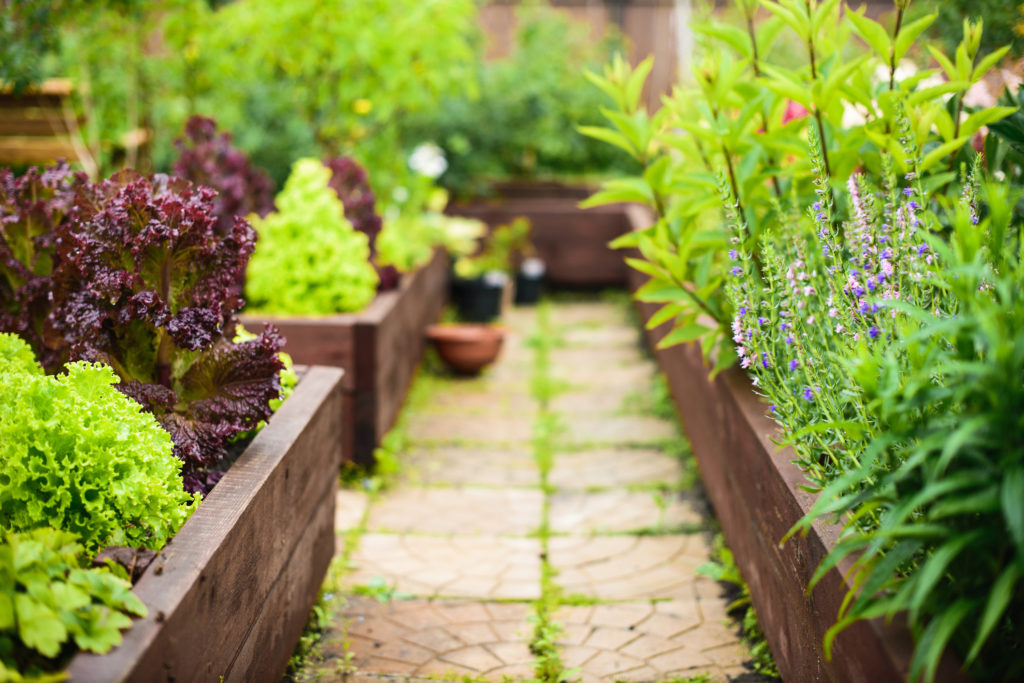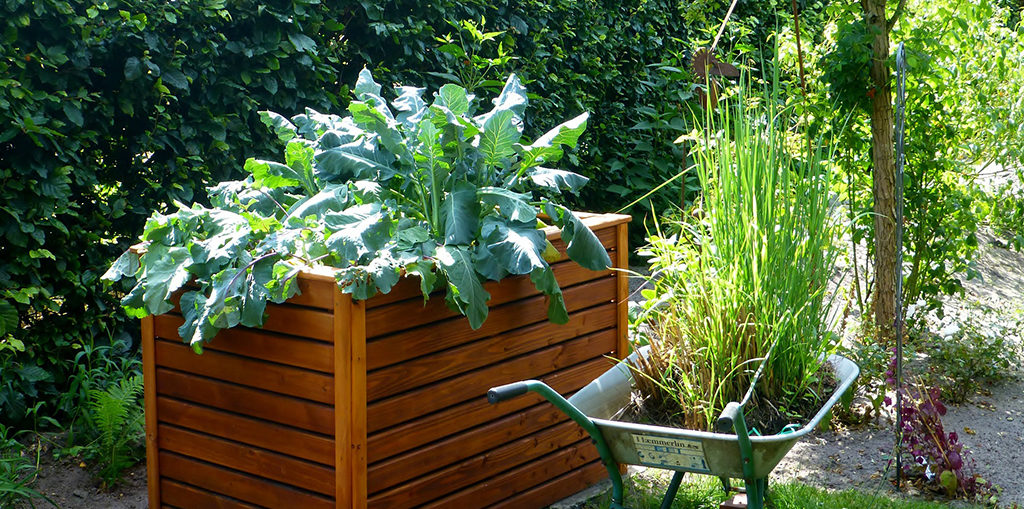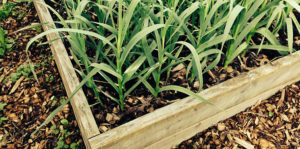While it’s true that your flowers, plants, and veggies may grow well in the ground, they’re sure to flourish with the added protection of a raised garden bed. Raised beds, or garden boxes, offer a variety of benefits that make it the perfect place for your plants to dwell. Not to mention, these charming boxes add structure and balance to your landscape!
Benefits of Raised Bed Gardens
Raised garden beds are gardening plots built above the ground’s surface, usually enclosed by wood and filled with soil. They allow your plants to be elevated from poor, compacted ground underneath. Though they kind of sound like an enhanced container, garden beds differ from containers as they don’t actually have a bottom holding the contents in. Underneath the bed of ideal soils that you add yourself is the ground, so your plant’s roots are never trapped and can always seek out nutrients further down.
With the soil elevated above ground level, it warms up much quicker and provides ample drainage. This allows gardeners to plant earlier in the season. The sides of the garden box also keep everything contained and protected—soil won’t wash away during heavy rains, and pests and weeds will find it more difficult to find a way in!
Aside from the benefits to your plants, let’s talk about the benefits for you! Of course, as long as your precious plants are happy and thriving, you’re probably pretty content, but bending over in the garden to tend to them can be hard on the knees, back, and joints. Elevated garden beds don’t require you to bend over quite so much (if at all), so you can enjoy gardening ache-free!

How to Build a Raised Bed Garden
Choosing a Spot
Just like any garden plot, make sure you choose an area for your raised bed garden with your plants’ needs in mind. Are you planting delicious veggies that need ample sun to germinate? Annual flowers that’ll blow away in windy areas? Or perennial shrubs that might appreciate a little shade? Generally, it’s a good idea to make sure your raised garden bed gets a fair amount of sunshine (4-6 hours a day) and is sheltered from the wind. This way, you have plenty of options for plants that’ll thrive in this plot every year.
Preparing the Plot
Next, you’ll want to either get rid of or cover up the existing grass in the area. This is when it’s a good idea to set up some markers for yourself—you don’t want to end up digging outside the perimeter and making the area look messy. You can either remove the grass with a spade or cover the area with some landscape fabric.
Building the Walls
Once the ground is grass-free, you can start building the retaining walls. Many gardeners like the natural look of wooden garden boxes, so wood is one of the most common materials. If you choose wood, make sure the lumber you get is safe for your plants. Pressure-treated lumber is treated with chemicals to protect it from the elements, making it a practical choice. While this type of wood is safe for growing organic edibles, you can also opt for woods with natural oils, like cedar and redwood. While they’re a little pricier, they’re naturally resistant to rot, last much longer, and are chemical-free!
While wooden walls are popular, you can also use a variety of other materials like stones, cinder blocks, bricks, plastic, or even metal— whatever suits your garden’s aesthetic best. Fill in your new raised bed with some spectacular soil, or whatever soil will be best for the plants you’re planning to include, and voila! You’re ready for planting! You can also add any soil amendments like mulch or fertilizers at this time.

Raised Garden Bed Ideas
Now that your raised garden bed is ready to go, you’re probably eager to fill it with plants! If you still haven’t decided, find some inspiration from some of these raised bed garden ideas:
Planting a raised vegetable garden is a great way to take advantage of your elevated garden bed. The warmer soil is ideal for growing your favorite veggies! While we’re already blessed with a pretty long growing season here in Florida, the closed environment of a raised garden is still great for getting higher yields. This is because you get to control soil content and quality, keep out common pests (like nematodes) and soil doesn’t become compacted by foot traffic.
If you’re looking for something a little simpler, plant an above ground flower bed—if nothing else, the height will help you showcase your favorite flowers even better! The walls of the raised bed work with your garden to enhance certain areas, while blocking unattractive features from view. Again, you can control the soil quality much easier to ensure your beautiful blooms get all the nutrients they need to flourish.
If you’re looking for something completely different, with a rustic, country vibe, you might want to try straw bale gardening. This raised garden bed consists of transforming bales of straw into cute containers for small plants. We recommend using wheat straw since actual hay bales will likely be full of seeds that’ll end up sending an army of weeds to attack your lawn. Prepare your bales with a high-nitrogen fertilizer and daily water for about a week before you begin planting. You’ll start to see little clumps of soils form over the bale. You can now sprinkle seeds over the bale, with some potting soil, or make a small hole for your seedlings. Although these elevated gardens break down into compost after a year or two, they’re pretty creative additions to your garden while they last!
It’s tempting to simply dig a hole and plop your seeds and plants right into the ground, but building a raised garden bed isn’t as complicated as it might seem. Plus, raised garden beds provide ideal conditions for your plants, bring a different visual element to the landscape, and make your garden look neater! Stop into Living Color Garden Center today for some of the raised garden bed supplies and lovely plants to fill them with!

